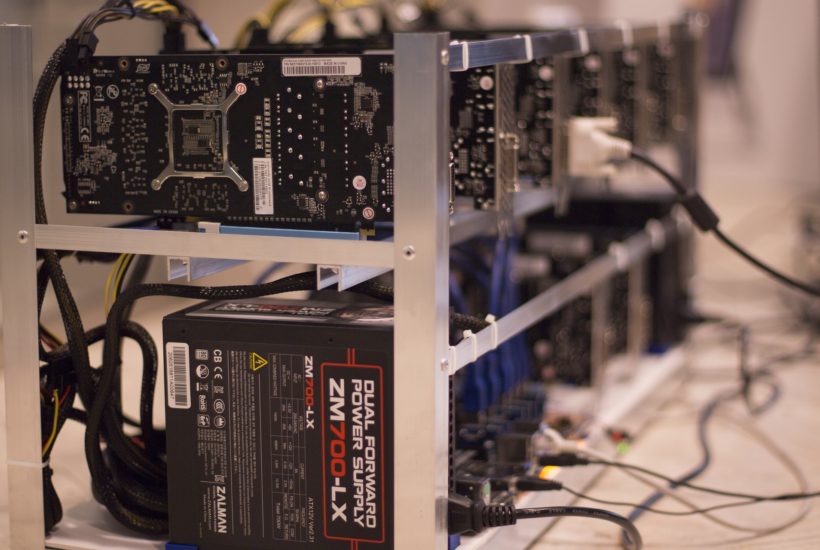Crypto
Ethereum 2.0 one step closer to becoming reality
Prysmatic Labs, one of the Ethereum development teams, has announced the introduction of the ETH 2.0 Topaz test network as a replacement for the previous Sapphire test network and has now successfully delivered it. Currently, the Ethereum network can only handle 15 transactions per second (TpS), which is anything but a lot. The team plans to change this with Ethereum 2.0.

The Ethereum team has announced the successful dismantling and validation of the Ethereum 2.0 gene block on a testnet. Vitalik Buterin and the entire development team are working tirelessly to ensure that Ethereum’s transition from Proof of Work to Proof of Stake (PoS) consensus algorithm will be a reality by July. It looks like the goal is indeed within reach.
Born2Invest’s team of journalists gathers the most interesting economic news in a single mobile application. It’s impossible to keep up with everything you’re interested in, but our companion app will help you keep track of the important news. Be the first to find out the progress made by the Ethereum team to launch the long-awaited Ethereum 2.0.
Ethereum comes a little closer to the Proof of Stake again
Prysmatic Labs, one of the Ethereum development teams, had announced the introduction of the ETH 2.0 Topaz test network as a replacement for the previous Sapphire test network and has now successfully delivered it. The Topaz test network is representing a further step towards the introduction of the long-awaited Ethereum 2.0.
With this, the Ethereum team has reached another important milestone on its way to ETH 2.0 by April 17th, 2020. The Genesis block has been successfully dismantled and validated.
Why has the whole thing only run on a test network so far? A test network is an environment that is only intended for test purposes. It allows application developers to experiment without destroying the network. Especially with a “working product” like Ethereum, a changeover is very complex and has to be done with great care.
Ethereum 2.0 is designed to make everything better
Ethereum is primarily an open-source platform with its own blockchain for processing self-executing intelligent contracts. In short, smart contracts. Fees for the transactions of the smart contracts are paid with the in-house cryptocurrency ether (ETH). ETH is the “gas that powers the Ethereum machinery” and has developed into the second-largest cryptocurrency by market capitalization in recent years.
For people who may not yet know: Ethereum 2.0 is designed to convert the number 1 blockchain for smart contracts into a Proof of Stake (PoS) consensus algorithm and replace the current computationally intensive Proof of Work (POW) system.
In addition, ETH 2.0 will eliminate all problems that plague the Ethereum network. These include limited scalability and security. In addition, it will implement the ability to stack Ether (ETH) to validate transactions on the network and earn additional tokens as payment.
Furthermore, Ethereum 2.0 will be faster and more robust because it supports sharding. Sharding is an approach that divides the processes in the Ethereum network into smaller nodes so that it can handle more transactions.
Currently, the Ethereum network can only handle 15 transactions per second (TpS), which is anything but a lot. However, the team is now planning to change this with ETH 2.0.
The original launch date in January 2020 has been postponed due to a change in the sharding plan. However, if everything continues as planned, ETH 2.0 is expected to start later in July 2020.
Although, further delays should be better expected. Nevertheless, everything seems to be going in the right direction. At the beginning of March 2020, ETH 2.0 passed a security audit by Least Authority, a block chain security consulting company. At the moment, the Genesis block has been successfully removed and validated on the test network. So it looks like things are moving forward!
__
(Featured image by rebcenter-moscow via Pixabay)
DISCLAIMER: This article was written by a third party contributor and does not reflect the opinion of Born2Invest, its management, staff or its associates. Please review our disclaimer for more information.
This article may include forward-looking statements. These forward-looking statements generally are identified by the words “believe,” “project,” “estimate,” “become,” “plan,” “will,” and similar expressions. These forward-looking statements involve known and unknown risks as well as uncertainties, including those discussed in the following cautionary statements and elsewhere in this article and on this site. Although the Company may believe that its expectations are based on reasonable assumptions, the actual results that the Company may achieve may differ materially from any forward-looking statements, which reflect the opinions of the management of the Company only as of the date hereof. Additionally, please make sure to read these important disclosures.
First published in CRYPTO MONDAY, a third-party contributor translated and adapted the article from the original. In case of discrepancy, the original will prevail.
Although we made reasonable efforts to provide accurate translations, some parts may be incorrect. Born2Invest assumes no responsibility for errors, omissions or ambiguities in the translations provided on this website. Any person or entity relying on translated content does so at their own risk. Born2Invest is not responsible for losses caused by such reliance on the accuracy or reliability of translated information. If you wish to report an error or inaccuracy in the translation, we encourage you to contact us.

-

 Crowdfunding4 days ago
Crowdfunding4 days agoDeep Learning Italia Launches €400K Crowdfunding to Bridge Italy’s Tech Skills Gap
-

 Biotech2 weeks ago
Biotech2 weeks agoSpain Joins First EU Joint Clinical Assessment Under New Health Technology Regulation
-

 Crowdfunding1 week ago
Crowdfunding1 week agoa2censo Expands Crowdfunding Access for SMEs and New Investors
-

 Markets4 days ago
Markets4 days agoRice Market Rebounds from Oversold Lows Amid Weak Demand























